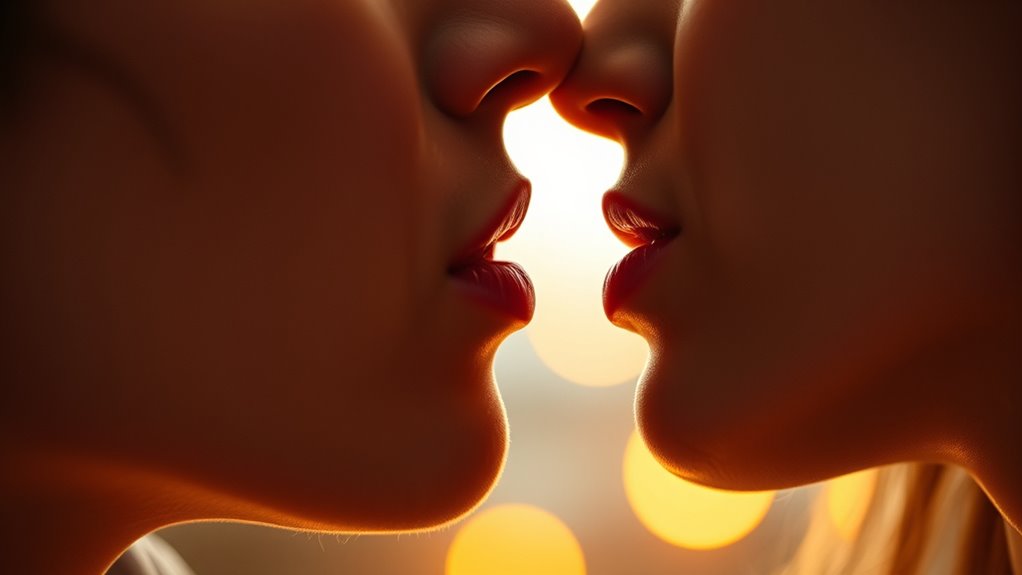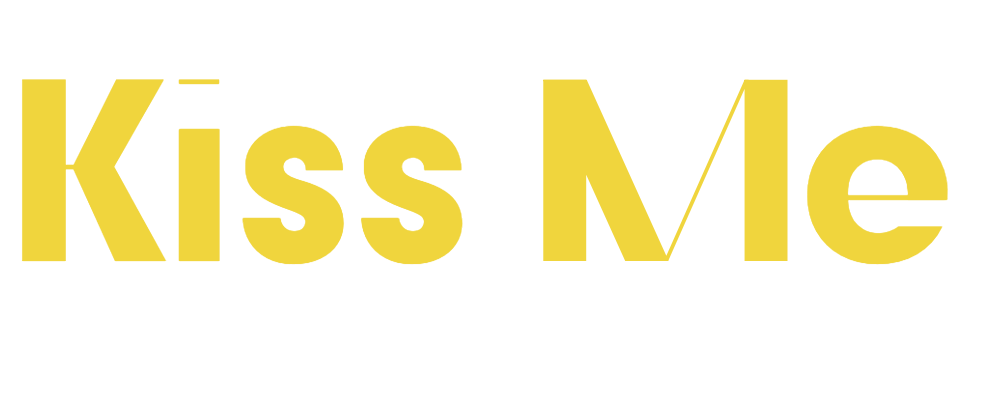Predicting a kiss solely from mouth movements is quite challenging because lip shapes alone aren’t enough to confirm such an intimate gesture. Facial expressions, body language, and context are essential in understanding when someone is about to kiss. While certain lip cues might hint at closeness, they don’t reliably indicate a kiss. If you keep exploring, you’ll discover how visual cues and social signals work together to reveal these subtle moments.
Key Takeaways
- Lip movements alone are generally insufficient to reliably predict a kiss due to similar lip shapes and lack of contextual cues.
- Facial expressions, body language, and emotional signals provide essential context for interpreting social gestures like kissing.
- Silent lip reading skills can interpret some speech but are limited in understanding nuanced social interactions.
- Predicting a kiss requires comprehensive visual cues beyond mouth movements, including proximity and facial expressions.
- Contextual awareness and full-body signals are crucial for accurately interpreting intimate gestures, not just lip movements.

Have you ever wondered how people can understand speech just by watching someone’s lips move? This fascinating skill is known as lip reading, and it relies heavily on understanding visual speech. Visual speech involves interpreting the movements of the lips, tongue, and facial expressions to grasp what someone is saying, even without sound. It’s a form of silent communication that can be incredibly effective when audio isn’t available or when background noise makes hearing difficult. Many deaf or hard-of-hearing individuals develop exceptional lip-reading skills, but even those with perfect hearing can sometimes rely on visual cues to enhance their understanding of speech.
Lip reading isn’t just about watching lips move; it’s about decoding a complex set of visual signals. When you observe someone talking, your brain processes subtle movements—like the shape of their mouth, the position of their tongue, and their facial expressions—to infer the spoken words. This process requires a keen eye and a good understanding of speech patterns and facial cues. For example, certain sounds produce distinctive lip shapes—like the rounded “O” or the pursed “P” sounds—making it possible to distinguish between words based solely on visual information. However, many sounds look similar on the lips, which can make lip reading challenging and sometimes lead to misunderstandings.
In the context of predicting social interactions, like a kiss, lip reading becomes even more intriguing. You might wonder if you can tell when someone is about to kiss just by watching their mouth movements. While some subtle cues—like leaning in, pursing lips, or a specific facial expression—may suggest intimacy, accurately predicting a kiss solely from lip movements is difficult. Unlike deciphering speech, where the goal is to understand words, predicting a kiss involves interpreting emotional and contextual cues that aren’t always visible on the lips alone. Many of these signals are found in facial expressions, body language, and proximity, rather than just mouth movements. Additionally, visual speech is only one component of communication, and understanding social gestures often depends on the full context, not just lip movements.
This highlights the limits of visual speech and silent communication in predicting complex social gestures. Lip reading is a valuable skill, but it isn’t infallible, especially when it comes to understanding nuanced interactions like a kiss. Still, it demonstrates how powerful visual cues can be in communication, allowing us to interpret and respond to others even when sound isn’t an option. Whether for practical reasons or curiosity, developing your ability to read lips can enrich your understanding of human interaction—though it’s always important to contemplate the entire context, not just what the lips reveal.
Frequently Asked Questions
How Accurate Is Lip Reading for Predicting Kisses?
You wonder how accurate lip reading is for predicting kisses. While visual accuracy can identify mouth movements, it’s not always dependable for emotional interpretation, which plays a key role in kissing. Lip reading can sometimes catch the physical act, but it often misses the emotional context behind it. So, predicting a kiss solely from mouth movements isn’t highly precise, as emotions and subtle cues are vital for full understanding.
Can Lip Reading Technology Distinguish Different Types of Kisses?
You wonder if lip reading technology can distinguish different types of kisses. It’s possible, as advanced systems analyze mouth movements and emotional cues for kiss classification. These cues help identify whether a kiss is romantic, friendly, or affectionate. However, accuracy varies depending on technology sophistication and context. While promising, current lip reading tech still faces challenges in reliably recognizing nuanced kiss types based solely on mouth movements.
Do Cultural Differences Affect Lip Reading of Romantic Gestures?
Imagine trying to decode a romantic gesture without understanding cultural nuances—it’s like reading a foreign language. Cultural differences profoundly impact lip reading of gestures, as interpretations vary widely across societies. You might see a simple mouth movement and misjudge its meaning, missing the subtle cues that define a kiss or embrace. Recognizing these cultural nuances is essential for accurate gesture interpretation, especially in diverse settings where meanings can differ dramatically.
Is Lip Reading Effective in Noisy Environments?
In noisy environments, lip reading can be less effective because visual cues become harder to interpret. When speech clarity drops, you rely more on mouth movements and facial expressions, but background noise can obscure these cues. You may find it challenging to understand conversations or detect romantic gestures, especially if lighting is poor or distractions are high. Overall, visual cues are essential, yet they’re often limited by environmental factors.
Can Lip Reading Be Used for Security or Surveillance Purposes?
You might think using lip reading for security or surveillance is a game changer, but it’s a double-edged sword. While it can help monitor conversations in silent environments, it raises serious privacy concerns and ethical considerations. You need to weigh the benefits of enhanced security against potential invasions of privacy. Without proper safeguards, it’s easy to cross the line, turning technology into a tool for unwarranted surveillance.
Conclusion
You might think lip reading isn’t precise enough to predict a kiss, but advances in technology are changing that. By analyzing subtle mouth movements, researchers are making strides in understanding intimate gestures. While it’s not foolproof yet, it demonstrates how innovation can open new ways to interpret human communication. Don’t dismiss it as science fiction—this breakthrough could reshape how we connect, revealing emotions even when words aren’t spoken.










